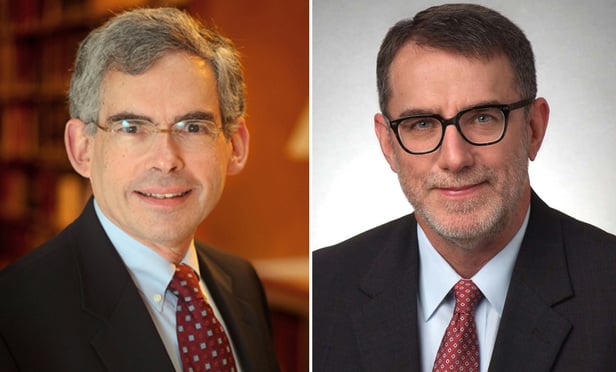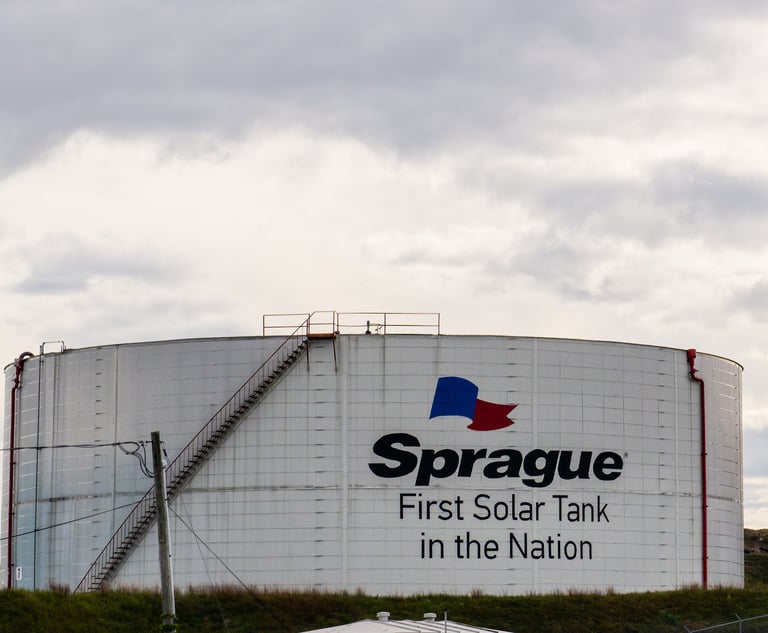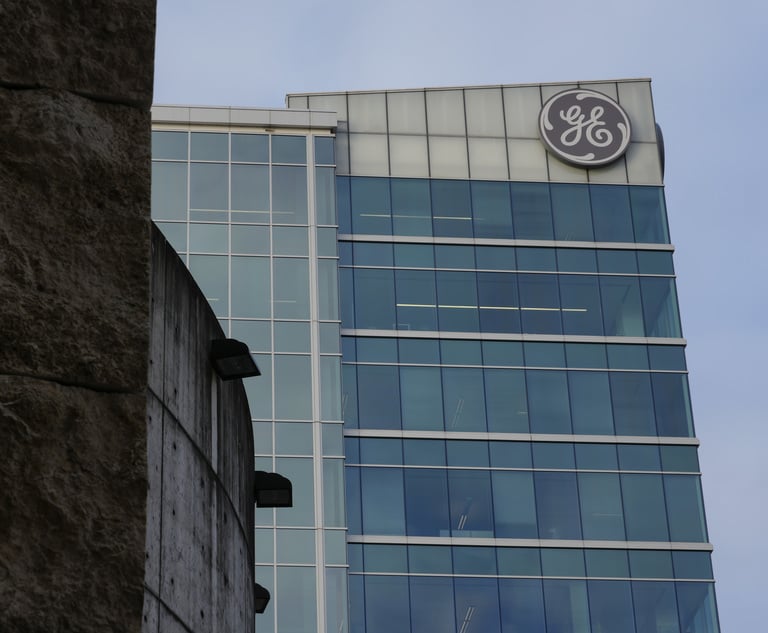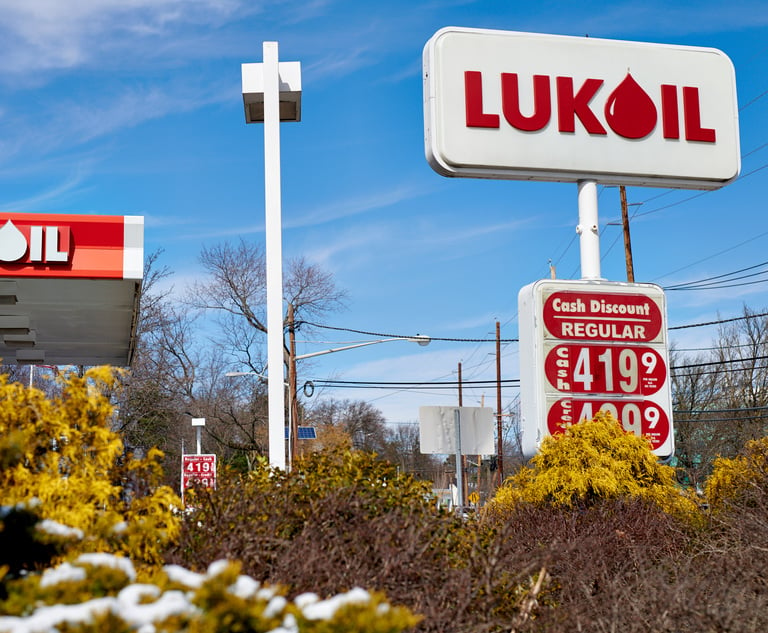New Climate Law Will Reshape NY's Key Sectors
In their Environmental Law column, Michael Gerrard and Edward McTiernan discuss the "deep changes in the way electricity is generated, people and goods move around, and buildings are erected and renovated in New York" that will be required by the Climate Leadership and Community Protection Act, which both houses of the state Legislature have passed and Governor Andrew Cuomo has promised to sign.
July 10, 2019 at 12:00 PM
9 minute read
 Michael B. Gerrard and Edward McTiernan
Michael B. Gerrard and Edward McTiernan
Deep changes in the way electricity is generated, people and goods move around, and buildings are erected and renovated in New York will be required by the Climate Leadership and Community Protection Act (CLCPA), which both houses of the state Legislature have passed and Governor Andrew Cuomo has promised to sign.
The new law requires reductions of total statewide greenhouse gas emissions below 1990 levels to be 40% in 2030 and 85% in 2050. (As of 2015, the last year for which data are available, emissions were 8.5% below 1990 levels.) It also sets parameters by which emissions offsets can be used to reach net zero emissions toward an aspirational goal of 100% reduction by 2050.
The state Department of Environmental Conservation (DEC) is required to promulgate regulations “to ensure compliance with the statewide emission reduction limits.” These regulations shall “[i]nclude legally enforceable emissions limits, performance standards, or measures or other requirements to control emissions from greenhouse gas emission sources.” The only exception is “agricultural emissions from livestock.” Specifically included are “internal combustion vehicles that burn gasoline or diesel fuel and boilers or furnaces that burn oil or natural gas.”
Regulated sources are those anthropogenic sources, as determined by DEC, “whose participation in the program will enable the department to effectively reduce greenhouse gas emissions, and that are capable of being monitored for compliance.” This may have the effect of excluding some agricultural emissions, for example.
To achieve “net zero emissions” of greenhouse gases DEC may establish an “alternative compliance mechanism” for certain sources covered by its emissions limits. These are offsets that will “enhance the conditions of the ecosystem or geographic area adversely affected.” Offsets must “substantially reduce or prevent the generation or release of pollutants through source reduction.” They must “be located in the same county, and within twenty-five linear miles, of the source of emissions, to the extent practicable.” These requirements may be difficult to achieve, and may limit the availability of offsets, depending on how DEC writes the regulations. “Sources in the electricity generation sector” are not eligible to use offsets.
Electricity
CLCPA mandates that 70% of electric power demand in 2030 be met by renewables, and 100 percent be from “zero emissions” sources in 2040. Thus the requirement for 2040, unlike that for 2030, may include nuclear. In 2018, 32% of New York's power came from nuclear power plants. However, two of them—the Indian Point units in Westchester County—are scheduled to close in 2020 and 2021. The remaining four are all on the shores of Lake Ontario. Their operating licenses have all been extended, but they all expire before 2040 except for Nine Mile Point Unit 2, whose license expires in 2046. Since there are no proposals to build new nuclear power plants in New York, it appears that nuclear power will make little contribution to New York's electricity supply in 2040, barring further license extensions for existing plants or very rapid development and acceptance of new nuclear technologies.
Of the remaining sources of power for New York, 39% comes from fossil fuel; 23% from hydro; and 6% from other renewables (mostly wind and solar). The fossil fuel electricity is overwhelmingly from natural gas. (The two remaining coal-fired power plants in the state are scheduled to close by 2020.) Since electric generating plants cannot use offsets, it looks like all the natural gas power plants in the state will need to close by 2040, unless economical and highly effective carbon capture and sequestration technology for such plants develops rapidly. The environmental justice community played a major role in shaping CLCPA, and has long complained that natural gas plants are disproportionately located in or near low-income and minority communities.
Oil is no longer used for baseload power generation in New York, but there are numerous emergency generators that burn gasoline, diesel fuel, propane, or natural gas. Many of them have high emissions of conventional air pollutants as well as greenhouse gases when in use. Non-fossil biofuels may work in some of them. DEC will have to decide how to treat these generators.
The new law contemplates a massive increase in renewables. It mandates a minimum of 6 gigawatts (GW) of distributed solar capacity (such as on rooftops) by 2025 (there is now 1.5 GW), and 9 GW of offshore wind capacity by 2035 (there is now none, though the state is actively working to build several wind farms off Long Island). There will be more onshore wind as well, but CLCPA does not specify how much. The law further requires 3 GW of energy storage capacity by 2030 (there is now 0.039 GW). The storage does not itself generate electricity, but it can help provide power when the sun is not shining and the wind is not blowing. To put these numbers in perspective, a good-sized nuclear power plant produces about 1 GW, day and night.
The ability to expand hydro generation within the state is limited. (It now mainly comes from massive power plants at Niagara Falls and on the Saint Lawrence River; there are also numerous smaller ones.) However, HydroQuebec has indicated that it has ample excess capacity (and could build more) and would be pleased to sell it to New York if the necessary transmission lines were built to carry the power from Canada to the New York City area, where most of the demand is located. The CLCPA has no restrictions on importing zero-emissions power.
The CLCPA also calls for efforts to increase energy efficiency, leading to a 185 trillion BTU reduction below 2025 forecasts. (The State Energy Plan forecasts total state primary energy use of 3,809 trillion BTU in 2025, compared to 3,715 trillion in 2015.) This is energy of all kinds. However, despite efficiency measures, electricity use is likely to soar as the transport, residential and commercial sectors rely more on electricity, as discussed below. This will add to the pressure to provide more wind, solar and hydro power.
Transportation
Though electricity receives much of the attention, its generation only accounts for 13% of the greenhouse gas emissions in the state (17% if net imports are included). Transportation accounts for 33%; and (not counting their electricity use) residential is 16% and commercial is 10%.
Drastically reducing transportation emissions will require the replacement over time of virtually all gasoline-and diesel-using passenger cars and SUVs with electric vehicles. (It is possible that some will use hydrogen.) Heavy-duty vehicles such as trucks and buses will also need to move to cleaner fuel sources; unless battery technology improves considerably, biogas from municipal and agricultural waste may be used increasingly.
Fuel and emission standards for motor vehicles are under federal control. New York cannot mandate electric vehicles on its own. The Trump Administration is attempting to relax the existing standards, but if a different president is elected in 2020, he or she may well strengthen them again. Meanwhile, an essential role for the state and city governments is to establish a robust system of charging stations.
Efforts are also needed to reduce vehicle miles traveled. The plan must include “[l]and-use and transportation planning measures.” The state law requiring congestion pricing in Manhattan south of 60th Street (the subject of this column on May 9, 2019) will also help that area, both by discouraging driving and by providing new funding for mass transit.
Buildings
Direct residential and commercial energy uses add up to 26% of New York greenhouse gas emissions. Most of this is from burning natural gas and oil for space heating and cooling; water heating; and cooking.
CLCPA calls for a planning process to develop “[m]easures to achieve reductions in energy use in existing residential or commercial buildings, including the beneficial electrification of water and space heating in buildings, establishing appliance efficiency standards, strengthening building energy codes, requiring annual building energy benchmarking, disclosing energy efficiency in home sales, and expanding the ability of state facilities to utilize performance contracting.”
One mechanism that DEC may contemplate to achieve the law's emissions targets is to require emissions permits for buildings over a certain size. In April 2019 the New York City Council adopted a major law, Local Law 97 of 2019, that sets limits for 2024 and 2030 on the amount of greenhouse gas emissions per square foot for different kinds of buildings over 25,000 square feet. Unlike the CLCPA, the New York City law allows buildings to achieve compliance by purchasing renewable energy credits, buying a broader range of offsets, or paying a penalty. The interaction of CLCPA and the New York City law may become complicated.
In 2016 Mayor Bill de Blasio issued a report, “One City Built to Last: Transforming New York City Buildings for a Low-Carbon Future,” from a large technical working group, that laid out pathways for residential and commercial buildings to cut energy use and emissions. The report calls for major work on heating distribution systems and lighting, deep energy retrofit strategies, sub-metering of non-residential tenant spaces, workforce training, and many other actions. A study by Professor David Hsu of MIT concluded that retrofitting buildings in the New York area has the potential to create 126,000 jobs by 2030.
Next Steps
CLCPA establishes a New York State Climate Action Council of 22 members (12 of them the heads of state agencies) to devise a “scoping plan” to achieve the law's emissions targets, which will be incorporated into the state's energy plan. It will work with special advisory groups on environmental justice and on “just transition.” The draft plan is due in two years and the final in three. Four years from enactment, DEC must issue the regulations, informed by the scoping plan, to ensure compliance with the CLCPA's emissions targets. Under existing law, the Public Service Commission must regulate in a manner that is consistent with the state's energy plan. There will be many public hearings along the way, and, no doubt, fierce debates.
Michael B. Gerrard is a professor and director of the Sabin Center for Climate Change Law at Columbia Law School, and Senior Counsel to Arnold & Porter. Edward McTiernan is a partner in Arnold & Porter and former general counsel of the New York State Department of Environmental Conservation.
This content has been archived. It is available through our partners, LexisNexis® and Bloomberg Law.
To view this content, please continue to their sites.
Not a Lexis Subscriber?
Subscribe Now
Not a Bloomberg Law Subscriber?
Subscribe Now
NOT FOR REPRINT
© 2025 ALM Global, LLC, All Rights Reserved. Request academic re-use from www.copyright.com. All other uses, submit a request to [email protected]. For more information visit Asset & Logo Licensing.
You Might Like
View All
Oil Co. Alleges Plot to Drive Away Competition in NYC's Liquid Fuel Market
3 minute read

GE Agrees to $362.5M Deal to End Shareholder Claims Over Power, Insurance Risks
2 minute read
Lukoil Pan Americas Sues Investment Firm Over Alleged $18 Million Breach
Trending Stories
- 1Uber Files RICO Suit Against Plaintiff-Side Firms Alleging Fraudulent Injury Claims
- 2The Law Firm Disrupted: Scrutinizing the Elephant More Than the Mouse
- 3Inherent Diminished Value Damages Unavailable to 3rd-Party Claimants, Court Says
- 4Pa. Defense Firm Sued by Client Over Ex-Eagles Player's $43.5M Med Mal Win
- 5Losses Mount at Morris Manning, but Departing Ex-Chair Stays Bullish About His Old Firm's Future
Who Got The Work
J. Brugh Lower of Gibbons has entered an appearance for industrial equipment supplier Devco Corporation in a pending trademark infringement lawsuit. The suit, accusing the defendant of selling knock-off Graco products, was filed Dec. 18 in New Jersey District Court by Rivkin Radler on behalf of Graco Inc. and Graco Minnesota. The case, assigned to U.S. District Judge Zahid N. Quraishi, is 3:24-cv-11294, Graco Inc. et al v. Devco Corporation.
Who Got The Work
Rebecca Maller-Stein and Kent A. Yalowitz of Arnold & Porter Kaye Scholer have entered their appearances for Hanaco Venture Capital and its executives, Lior Prosor and David Frankel, in a pending securities lawsuit. The action, filed on Dec. 24 in New York Southern District Court by Zell, Aron & Co. on behalf of Goldeneye Advisors, accuses the defendants of negligently and fraudulently managing the plaintiff's $1 million investment. The case, assigned to U.S. District Judge Vernon S. Broderick, is 1:24-cv-09918, Goldeneye Advisors, LLC v. Hanaco Venture Capital, Ltd. et al.
Who Got The Work
Attorneys from A&O Shearman has stepped in as defense counsel for Toronto-Dominion Bank and other defendants in a pending securities class action. The suit, filed Dec. 11 in New York Southern District Court by Bleichmar Fonti & Auld, accuses the defendants of concealing the bank's 'pervasive' deficiencies in regards to its compliance with the Bank Secrecy Act and the quality of its anti-money laundering controls. The case, assigned to U.S. District Judge Arun Subramanian, is 1:24-cv-09445, Gonzalez v. The Toronto-Dominion Bank et al.
Who Got The Work
Crown Castle International, a Pennsylvania company providing shared communications infrastructure, has turned to Luke D. Wolf of Gordon Rees Scully Mansukhani to fend off a pending breach-of-contract lawsuit. The court action, filed Nov. 25 in Michigan Eastern District Court by Hooper Hathaway PC on behalf of The Town Residences LLC, accuses Crown Castle of failing to transfer approximately $30,000 in utility payments from T-Mobile in breach of a roof-top lease and assignment agreement. The case, assigned to U.S. District Judge Susan K. Declercq, is 2:24-cv-13131, The Town Residences LLC v. T-Mobile US, Inc. et al.
Who Got The Work
Wilfred P. Coronato and Daniel M. Schwartz of McCarter & English have stepped in as defense counsel to Electrolux Home Products Inc. in a pending product liability lawsuit. The court action, filed Nov. 26 in New York Eastern District Court by Poulos Lopiccolo PC and Nagel Rice LLP on behalf of David Stern, alleges that the defendant's refrigerators’ drawers and shelving repeatedly break and fall apart within months after purchase. The case, assigned to U.S. District Judge Joan M. Azrack, is 2:24-cv-08204, Stern v. Electrolux Home Products, Inc.
Featured Firms
Law Offices of Gary Martin Hays & Associates, P.C.
(470) 294-1674
Law Offices of Mark E. Salomone
(857) 444-6468
Smith & Hassler
(713) 739-1250






